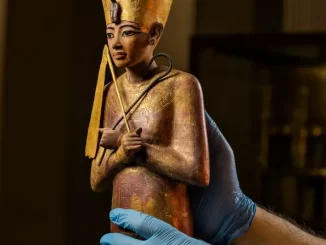In the heart of Italy lies a treasure trove of ancient wonders, where the echoes of a civilization long gone still resonate through the corridors of time. Nestled within the necropolis of Pianacce, the Tomb of the Infernal Chariot stands as a testament to the artistic prowess and spiritual beliefs of the Etruscans. Discovered in 2003, this remarkable structure has captivated archaeologists and historians alike, offering a glimpse into a world shrouded in myth and mystery.
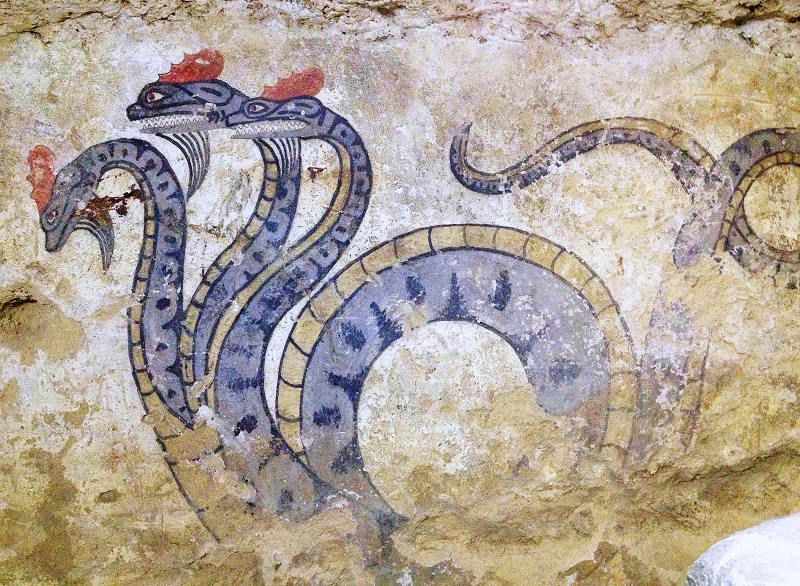
At the heart of this sacred tomb lies a mural that defies expectations and challenges conventional interpretations. Depicting a scene of unparalleled complexity and symbolism, the painting portrays a quadriga, or chariot, being pulled by two lions and two gryphons. Yet, it is the figure of the charioteer that truly steals the spotlight—a demon-like entity with a terrifying and possessive gaze, steering the chariot with an air of otherworldly authority.
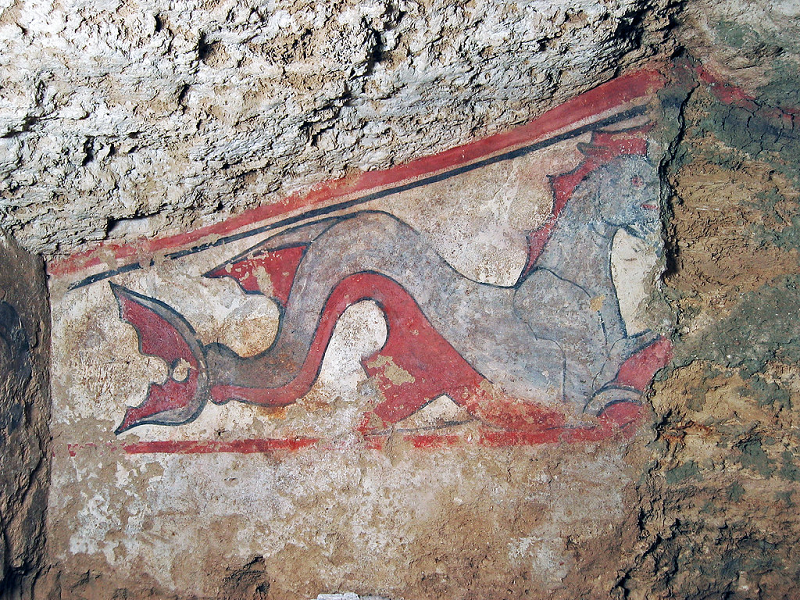
The significance of this imagery cannot be overstated. In Etruscan mythology, the journey to the afterlife held profound spiritual importance, with Charun, the ferryman of souls, guiding the deceased to the realm of the dead. The inclusion of this demonic charioteer, believed to be an innovative representation of Charun himself, adds a layer of complexity to the scene, suggesting a unique fusion of Etruscan and Greek influences.
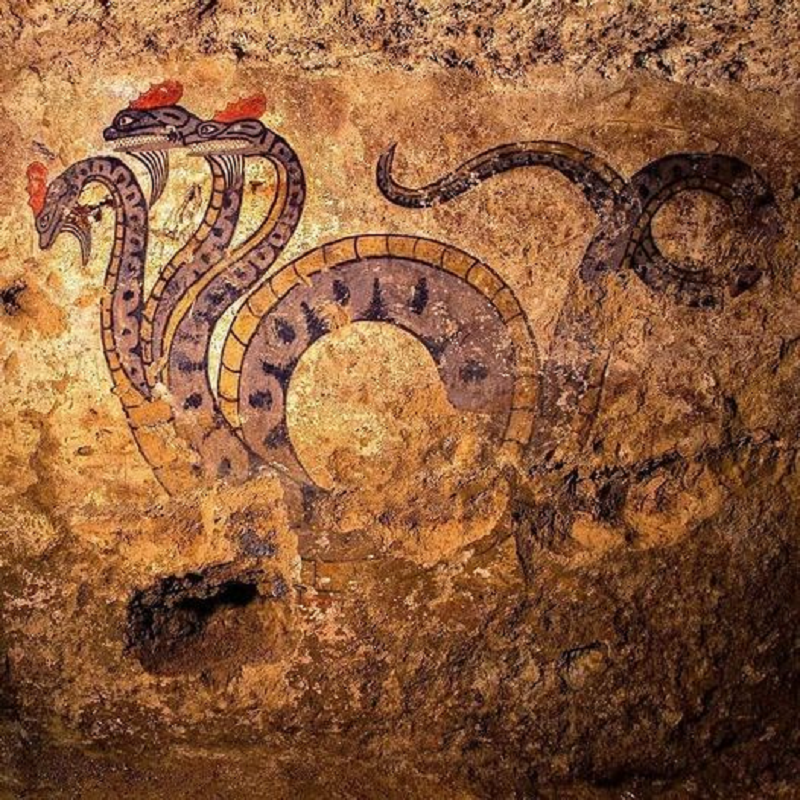
What sets this mural apart, however, is not just its subject matter, but also its artistic execution. The vibrant colors and intricate details speak to the skill and craftsmanship of the Etruscan artisans who created it. From the sinuous forms of the mythical beasts to the haunting expression of the charioteer, every brushstroke tells a story, inviting viewers to unravel the secrets hidden within the layers of paint.
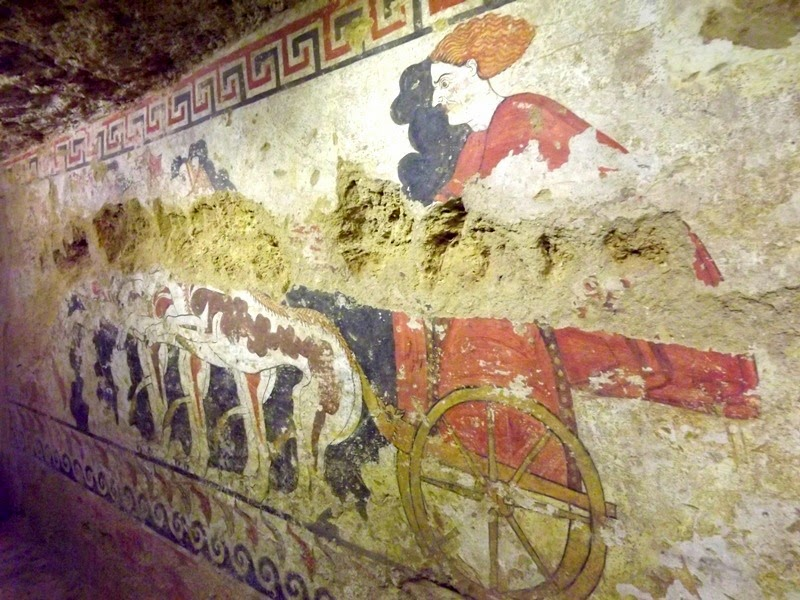
Equally noteworthy is the discovery of the Three-Headed Lernaean Hydra, a monstrous serpent that coils menacingly at the feet of the charioteer. In Greek mythology, the Hydra was a fearsome creature slain by the hero Heracles as one of his twelve labors. Its presence in an Etruscan tomb raises intriguing questions about the cultural exchange and intermingling of mythological motifs in the ancient Mediterranean world.

The significance of this find extends beyond its artistic and mythological implications. The Tomb of the Infernal Chariot is a testament to the rich funerary practices of the Etruscans, offering valuable insights into their beliefs surrounding death and the afterlife. The meticulous preservation of the mural speaks to the reverence with which these ancient tombs were regarded, serving as both a memorial to the deceased and a testament to the enduring legacy of a civilization long gone.
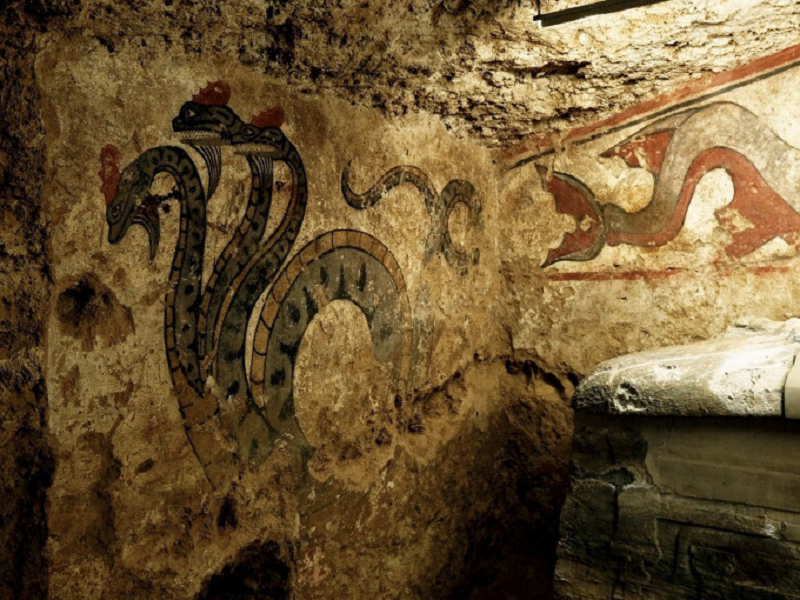
Conclusion
As we stand on the threshold of this ancient tomb, surrounded by the echoes of a bygone era, we are reminded of the enduring power of art and mythology to transcend the boundaries of time and space. The Three-Headed Lernaean Hydra, with its enigmatic presence and symbolic resonance, serves as a poignant reminder of the mysteries that still lie buried beneath the surface of the past. In unraveling its secrets, we not only illuminate the shadowy corners of history but also pay homage to the enduring spirit of human creativity and imagination.


